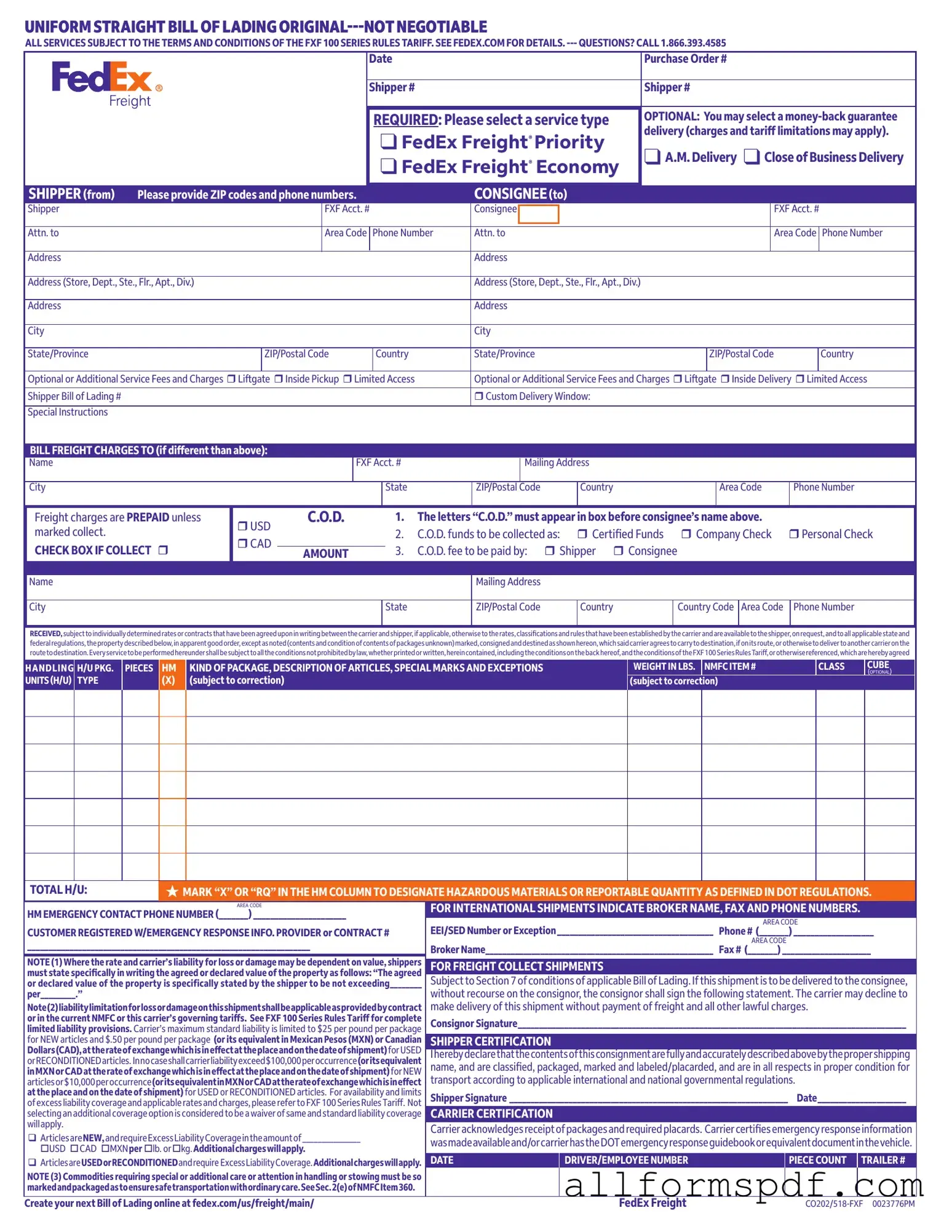Filling out the FedEx Bill of Lading form can seem straightforward, but many individuals make common mistakes that can lead to delays or complications in shipping. One prevalent error is failing to provide complete contact information for both the shipper and the consignee. This includes not only names but also complete addresses, phone numbers, and ZIP codes. Omitting these details can cause significant delays in delivery, as carriers rely on accurate information to ensure packages reach their intended destinations.
Another frequent mistake involves the selection of the service type. Shippers often overlook the importance of choosing the correct service option, such as FedEx Freight Priority or Economy. Each service type has different costs and delivery timelines. If the wrong option is selected, it may result in unexpected charges or delays that could have been avoided with careful consideration.
Additionally, many people neglect to specify the billing details correctly. When the freight charges are to be billed to a different party, it is crucial to fill in the appropriate fields. Failing to do so can lead to confusion and disputes over payment responsibilities. Furthermore, marking the C.O.D. (Cash on Delivery) option incorrectly can complicate the transaction. The letters “C.O.D.” must be clearly indicated in the designated box, or else the shipment may not be processed as intended.
Another area where errors commonly occur is in the declaration of hazardous materials. If a shipment contains hazardous materials, it is essential to mark the appropriate box and provide detailed information. Neglecting this requirement not only violates regulations but also poses safety risks during transport. This oversight can lead to legal repercussions and potential fines.
Shippers also frequently miscalculate the weight or dimensions of their packages. Accurate measurements are critical, as they determine shipping costs and ensure compliance with carrier regulations. Inaccuracies can lead to additional charges or even refusal of the shipment. It is advisable to double-check all measurements before finalizing the form.
Lastly, individuals often forget to sign and date the Bill of Lading. This signature is not merely a formality; it serves as a confirmation of the information provided and the terms agreed upon. Without a signature, the form may be considered incomplete, leading to further complications in the shipping process.
